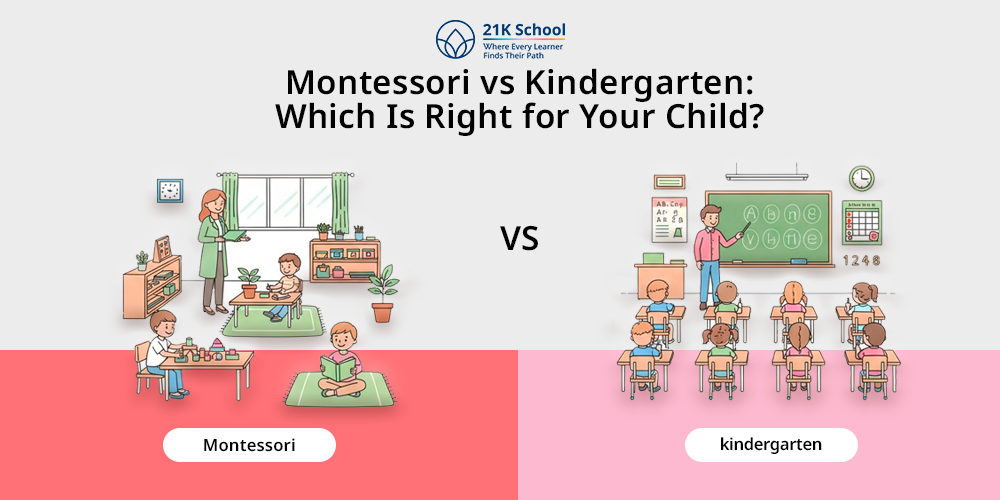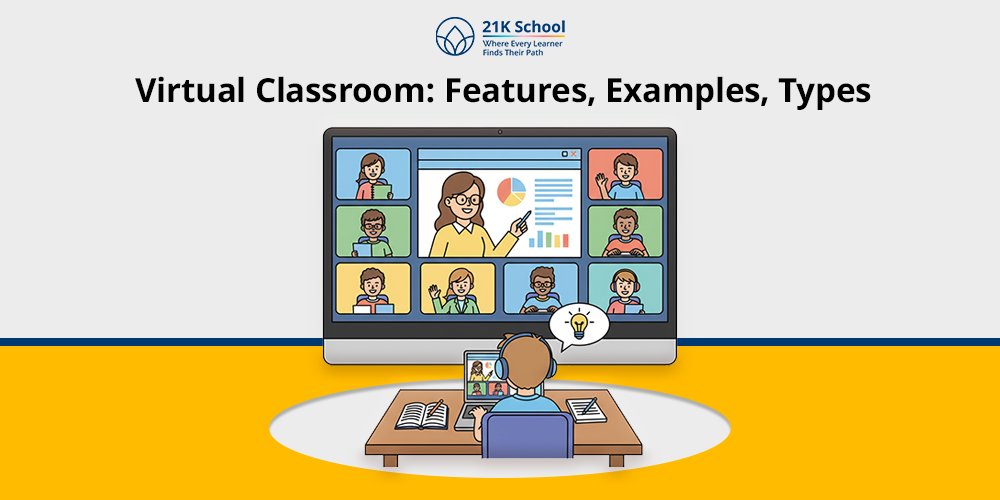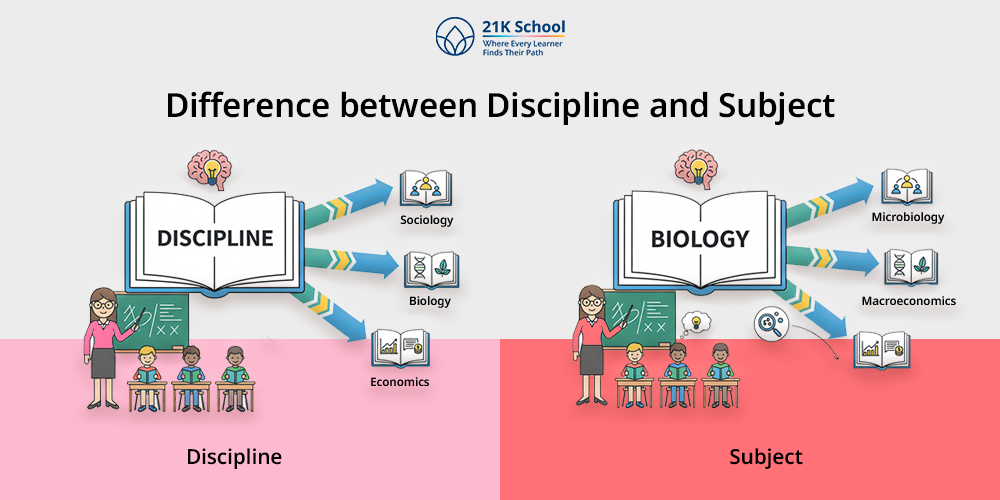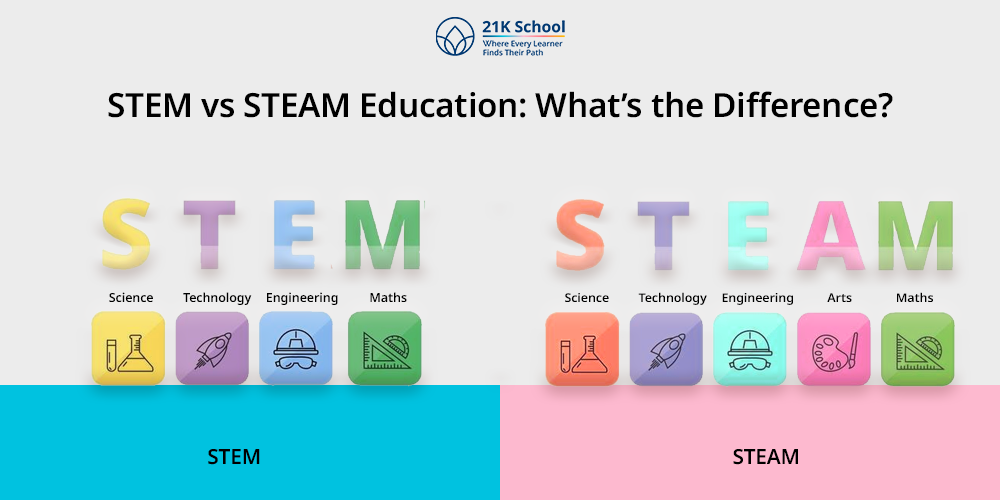
Your child needs education along with play which is only possible with montessori or kindergarten.
Parents are still confused about what to choose for their kids because most of them think both are the same.
So… what’s the real difference?
In this paper, we will learn the meaning behind Montessori and kindergarten, how the two are different, and what one may prove best with a child.
Table of Contents
What is Montessori?
The Montessori found that children will learn in an environment, where they are free to play, make choices, and pursue interesting activities, at their own speed.
This method was created by an Italian physician and the teacher, Maria Montessori, more than 100 years ago.
There are Montessori classrooms that are clean and stocked with highly structured materials.
They are more than just toys, each of them teaches a particular concept, be it in the field of math or language, or the sensory development or the practical life skills.
Among major characteristics of Montessori there are:
- Child-centered learning: Children will select what to do depending on their interests and competencies.
- Moveable materials: The Montessori materials are action-able and present the ability to touch, feel, and handle abstract concepts.
- Mixed-age classes: This is usually the case, with children between the ages of 3-6 being taught in one classroom; this helps to build new mentorship and collaboration.
- Stress on being independent: Children will get emphasized to do things by themselves- pouring water, tying shoelaces etc.
- Teacher as a guide: Montessori teachers commonly refer to themselves as guides and spend most of their time monitoring rather than giving direct instructions. They are not there to control learning, but to facilitate it.
What is Kindergarten?
The first official year of formal education is normally conventional kindergarten, particularly in state or mainstream private schooling, in child ages between 5 and 6.
Although the details of each school differ, kindergarten programs are usually designed in such a way that all schools have a structured curriculum and the learning goals are national or state-based.
At kindergarten one will tend to see:
- Teacher-centered lessons: The teacher does certain teaching activities with the students, mostly minute reading, writing and elementary mathematics.
- Same-age groupings: The groupings are characterized by all children being within the same age range.
- More structure: Circle time, snack, story and outdoor play and learning centres are used to break up the day.
- Pay special attention to school preparation: The aim is to provide the children with first grade readiness, both in terms of academics and behavior.
Kindergarten is also more standardized and all the students work on the same material at approximately the same speed.
Montessori vs Kindergarten: The Major Differences
So that you can better see the picture, the table below gives the comparison of the Montessori and traditional kindergarten in both aspects:
| Category | Montessori | Traditional Kindergarten |
| Age | 3-6 years (mixed ages) | 5-6 years (single age group) |
| Learning Style | Child-led, exploratory | Teacher-led, structured |
| Classroom Setup | Open, calm, with self-directed activity stations | Desks or centers with teacher at the front |
| Pace | Individualized-children progress at their own speed | Uniform-class moves through content together |
| Role of Teacher | Observer and guide | Instructor and classroom manager |
| Assessment | Observational, developmental tracking | Tests, worksheets, and formal assessments |
| Independence | Strongly encouraged and nurtured | Encouraged, but within set routines |
| Curriculum Focus | Practical life, sensory work, literacy, numeracy, grace & courtesy | Literacy, math, social skills, science |
| Daily Structure | Flexible blocks of uninterrupted work time | Timed segments and transitions |
| Cost Factors | Often more expensive; mostly private | Usually more affordable; often public |
1. Age Range:
- Montessori classrooms: Children are normally placed at the age bracket of 3 to 6 years in the same group. This approach with both mixed ages gives likelihood to the younger children to pick and the older children to act as mentors.
- Kindergarten Classrooms: Conventional-based kindergartens tend to include children who are about 5 or 6 years old.
2. Learning Style:
- Montessori: Learning is self initiated. Children decide what they would prefer to do and go at their rates.
- Kindergarten: The teacher tends to instruct the lessons and the students are expected to be on the same general schedule.
3. Classroom Setup:
- Montessori: The andragogy approach of a Montessori classroom is planned with attention to personality types of movement, choice, and independence. The shelves are low and the room is serene and well arranged.
- Kindergarten: These classrooms are like normal classrooms where the teacher stands in front of the desks and benches placed.
4. Pace of Learning:
- Montessori: Children have their own pace of learning, to have fun in learning.
- Kindergarten: It is scheduled and the class typically works together, irrespective of individuals achievement.
5. Role of the Teacher:
- Montessori: Montessori teachers therefore assume the role of guides or observers. They intervene where they should and hardly make much of the day go.
- Kindergarten: Kindergarten teachers are progressively a more active part in their lessons, discussion leaders, and classroom managers.
6. Assessment:
- Montessori: It is observed and not tested that progress is made. No grades, no gold stars are used, teachers look in advance of readiness before a new concept is presented.
- Kindergarten: At the kindergarten, a more structured form of assessment is normally taken and this involves worksheets, classwork or standardized instruments.
7. Independence:
- Montessori: Montessori is created so that they can develop independence early on. Children are advised to dress themselves, improve snacks, and clean their working places.
- Kindergarten: Kindergarten can promote a certain degree of directness but it is mostly directed by the adult.
8. Curriculum Focus:
- Montessori focuses on practical life, sensory, early mathematician and language as well as propriety and courtesy.
- Kindergarten is more likely to involve more academic-oriented tasks such as reading, writing, counting, and preparing students to leave elementary school.
9. Daily Structure:
- Montessori also provides extended periods of time with no breaks and the children get the chance to focus intensely on fun learning activities of their choice.
- Kindergarten days are also more divided into a circle time, reading time, snack time etc.
10. Cost Factors:
- Montessori: The Montessori programs are mostly privately owned, and maybe costly, but there indeed are public Montessori schools.
- Kindergarten is frequently publicly financed, and is more common in national systems of schools.
Conclusion
The distinction between Montessori and traditional kindergarten is about the point is to choose the one that fits the learning style, approach and personality development of your child and values of your family.
Independence, hands-on learning, and self-space discovery are emphasized by Montessori whereas kindergarten has a high degree of order, peer learning, and academic preparation.
You find the best for your baby when the educational plan fosters his or her growth with confidence, curiosity, and pleasure.
Every path comes to be right once you learn with passion and attention in initial years of education.



